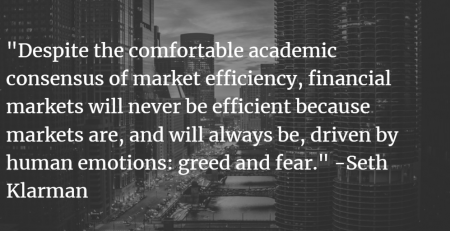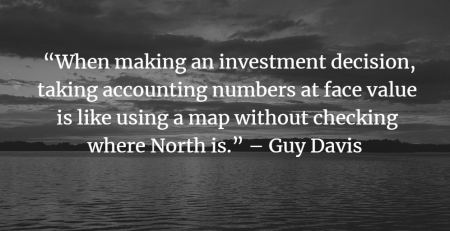Valuation Multiples: Convenient but Dangerous
-
P/E ratios will undervalue growth: taking a snapshot of short-term earnings does not give credit for future earnings growth. For example, a stock like Facebook trading on 28x next year’s earnings may look expensive vs the S&P 500 on 17x, but it is in fact a lot cheaper when you consider it’s growing earnings at 30%+ every year. To buy Facebook, we’re paying a 60% valuation premium, but we get more than 100% extra in earnings growth. In just two years of compounding earnings at 30%, that 28x P/E ratio would become 12x, assuming the price stayed the same. What looked expensive, now looks cheap.
-
The flipside is true of declining businesses- looking only at last year’s earnings won’t account for the fact that earnings might be falling every year. So, we can easily end up overvaluing a slowing or declining business.
-
P/E ratios are countercyclical. When we are at the top of a cycle, and earnings are unsustainably high, P/E ratios will make businesses look cheap. When we are at the bottom of the cycle, and earnings are non-existent, P/E ratios will make businesses look expensive. Thus, P/E ratios are sending the exact opposite signal that we want- to buy high and sell low.

Disclosures: This website is for informational purposes only and does not constitute an offer to provide advisory or other services by Globescan in any jurisdiction in which such offer would be unlawful under the securities laws of such jurisdiction. The information contained on this website should not be construed as financial or investment advice on any subject matter and statements contained herein are the opinions of Globescan and are not to be construed as guarantees, warranties or predictions of future events, portfolio allocations, portfolio results, investment returns, or other outcomes. Viewers of this website should not assume that all recommendations will be profitable or that future investment and/or portfolio performance will be profitable or favorable. Globescan expressly disclaims all liability in respect to actions taken based on any or all of the information on this website.
There are links to third-party websites on the internet contained in this web-site. We provide these links because we believe these websites contain information that might be useful, interesting and or helpful to your professional activities. Globescan has no affiliation or agreement with any linked website. The fact that we provide links to these websites does not mean that we endorse the owner or operator of the respective website or any products or services offered through these sites. We cannot and do not review or endorse or approve the information in these websites, nor does Globescan warrant that a linked site will be free of computer viruses or other harmful code that can impact your computer or other web-access device. The linked sites are not under the control of Globescan, and we are not responsible for the contents of any linked site or any link contained in a linked site. By using this web site to search for or link to another site, you agree and understand that such use is at your own risk.






